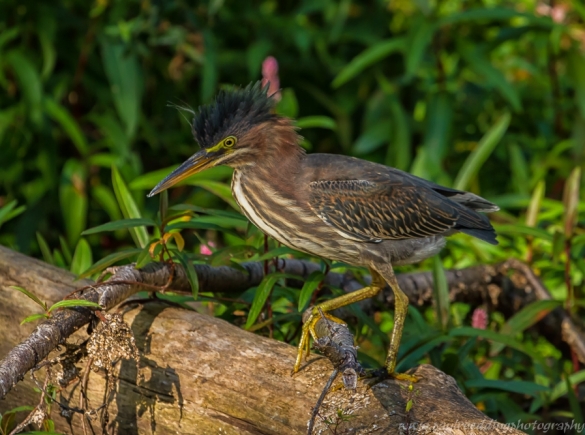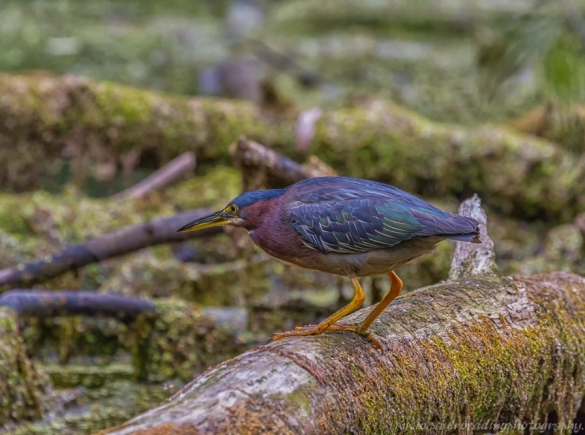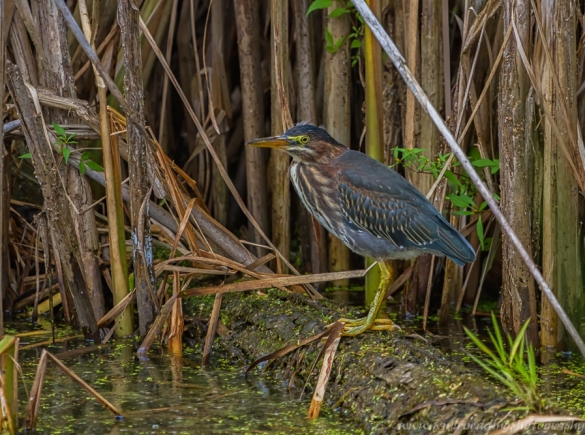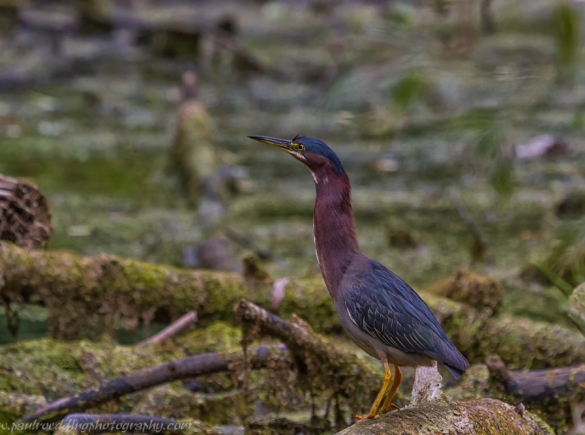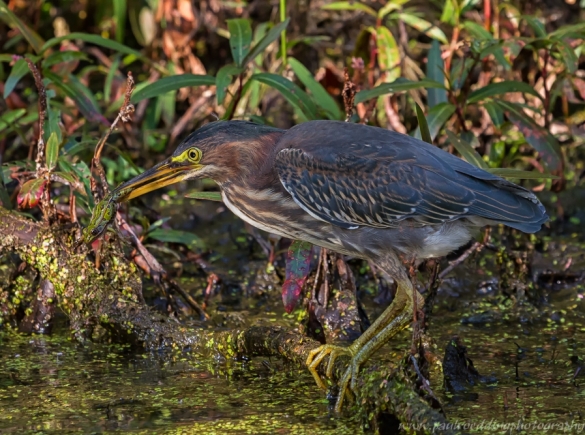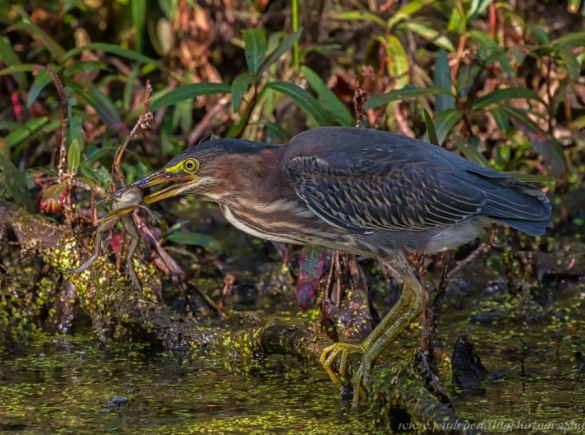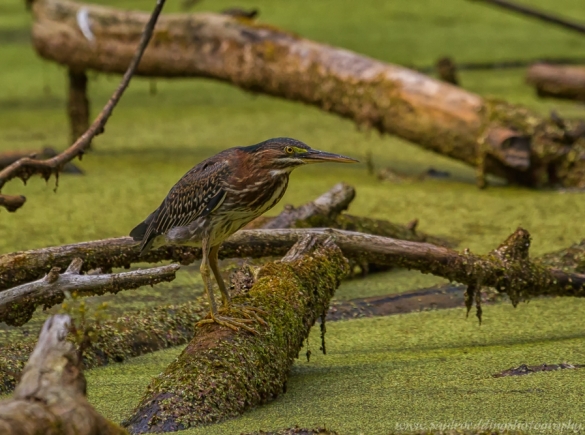Green Herons will soon be leaving our area for their wintering grounds to our south. Fortunately, these birds are currently providing exceptional views at an area ESA.
Over the past three weeks, I have been enjoying incredible views of Green Herons. In fact, the views achieved have been the best I have experienced. If you are unfamiliar with these birds, Green Herons display the most beautiful combination of iridescent blues and greens combined with a reddish brown neck. Standing only 18″ tall, Green Herons are often a challenge to locate within the swampy habitats they prefer despite their colouful plumage. This however is not the case currently at the Westminster Ponds ESA located in south London.
Under the right light conditions, the iridescent plumage of the Green Heron becomes quite evident.
Throughout September, I have seen as many as four Green Herons, both adults and juveniles (juveniles are heavily streaked on their necks and breasts) at one time at the west end of Saunders Pond. On most visits, these birds have been viewed within 20-40 feet of the path running alongside the pond. Green Herons will soon be leaving our area for their wintering grounds in the Southern United States, Central, and South America, so opportunities for these close encounters are running out.
The mix of cattails and fallen timber on the west side of Saunders Pond provides the perfect habitat for Green Herons.
The easiest access to these Green Herons is from behind Tourist Information located at 696 Wellington Road. From the parking lot head north on the paved path until you reach the boardwalk. Continue north on the boardwalk and begin scanning the fallen timber to your right and the cattails to your left. My best views have come from just north of the boardwalk along the dirt path where Saunders Pond comes to an end. Both sides of the path throughout this area have provided satisfying views.
When alarmed, Green Herons will extend their necks and raise the crests on the top of their heads. This particular bird heard children playing in the area and exhibited this classic behavior.
In my experience, time of day does not matter for viewing these Green Herons as I have found these birds both in the morning and afternoon. If you are wishing to photograph these birds, I would recommend waiting until about mid morning as this will allow the sun to get high enough in the sky to light up the birds nicely while achieving a faster shutter speed, If you cannot make it in the morning than late afternoon has been quite good too. Try not to leave it too late though as once the sun drops low in the sky the area becomes quite shaded. Great views of these birds can still be obtained, but your image quality may suffer due to the lack of light.
Click on the two above images to enlarge these photos of a Green Heron with a Northern Leopard Frog.
These particular Green Herons at the Westminster Ponds ESA are not overly wary of people, but moving slowly and speaking in a soft voice is still recommended to avoid stressing the birds.These Green Herons are in this area feeding heavily in preparation of their long migration south, so remember to respect their space and allow them to feed in order to accomplish this feat. The only times I have seen these birds startle is when a group of children ran by while shouting in loud voices. Even then the birds did not move far remaining in the area where there is an abundance of food. While watching and photographing these Green Herons I have observed them capture small fish, tadpoles, and Northern Leopard Frogs.
The heavy streaking on this Green Heron’s neck and breast indicate it is a juvenile bird.
If you are hoping to achieve great views of a Green Heron, I highly recommend visiting the Westminster Pond ESA soon. As mentioned earlier, these birds won’t remain in the area much longer, so time is running out for potentially the view of a lifetime.
Good birding,
Paul
*My 2018 calendars have arrived and are now available for purchase. To see the images featured and to purchase click here.*
